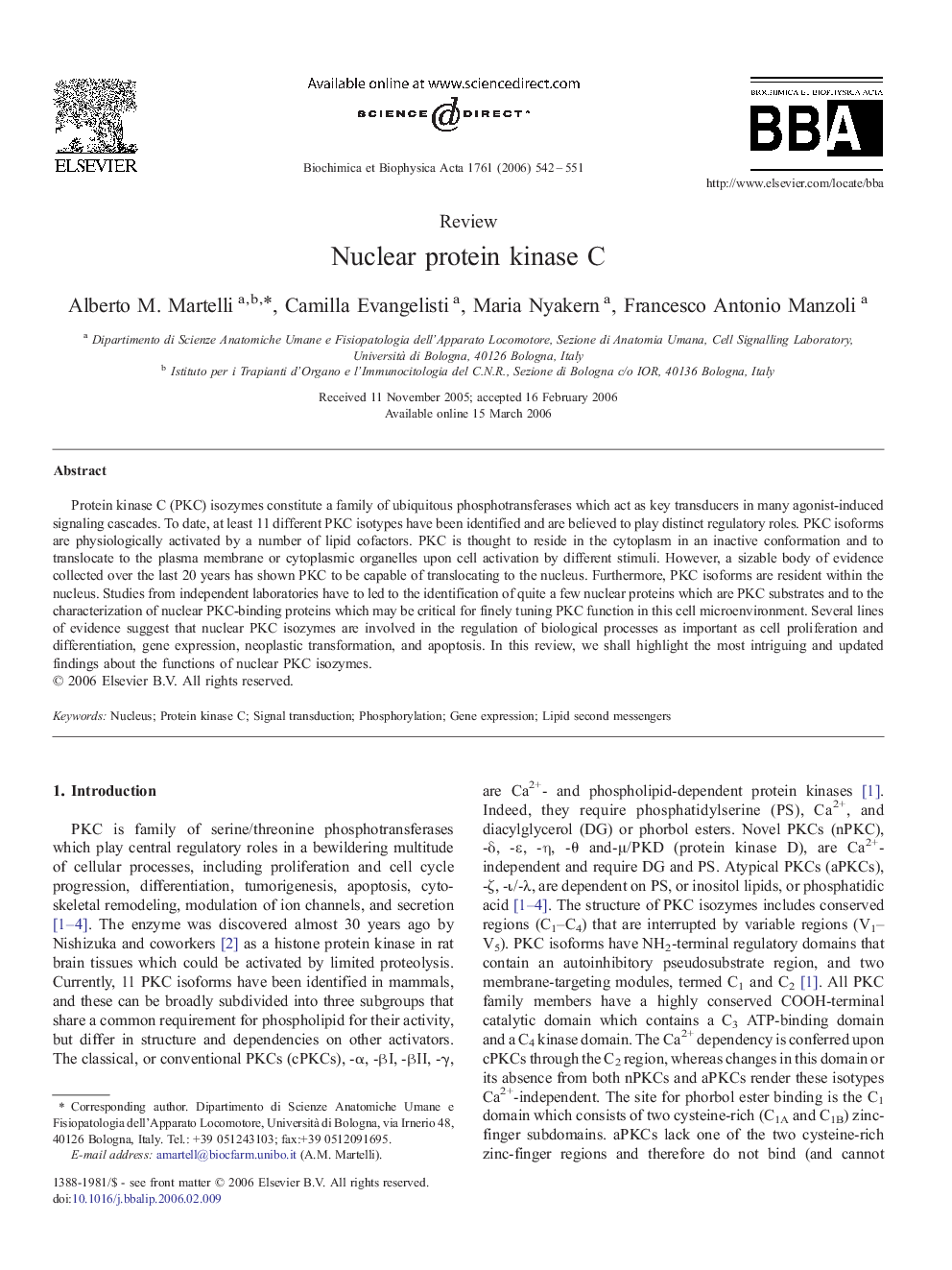| Article ID | Journal | Published Year | Pages | File Type |
|---|---|---|---|---|
| 1950331 | Biochimica et Biophysica Acta (BBA) - Molecular and Cell Biology of Lipids | 2006 | 10 Pages |
Protein kinase C (PKC) isozymes constitute a family of ubiquitous phosphotransferases which act as key transducers in many agonist-induced signaling cascades. To date, at least 11 different PKC isotypes have been identified and are believed to play distinct regulatory roles. PKC isoforms are physiologically activated by a number of lipid cofactors. PKC is thought to reside in the cytoplasm in an inactive conformation and to translocate to the plasma membrane or cytoplasmic organelles upon cell activation by different stimuli. However, a sizable body of evidence collected over the last 20 years has shown PKC to be capable of translocating to the nucleus. Furthermore, PKC isoforms are resident within the nucleus. Studies from independent laboratories have to led to the identification of quite a few nuclear proteins which are PKC substrates and to the characterization of nuclear PKC-binding proteins which may be critical for finely tuning PKC function in this cell microenvironment. Several lines of evidence suggest that nuclear PKC isozymes are involved in the regulation of biological processes as important as cell proliferation and differentiation, gene expression, neoplastic transformation, and apoptosis. In this review, we shall highlight the most intriguing and updated findings about the functions of nuclear PKC isozymes.
